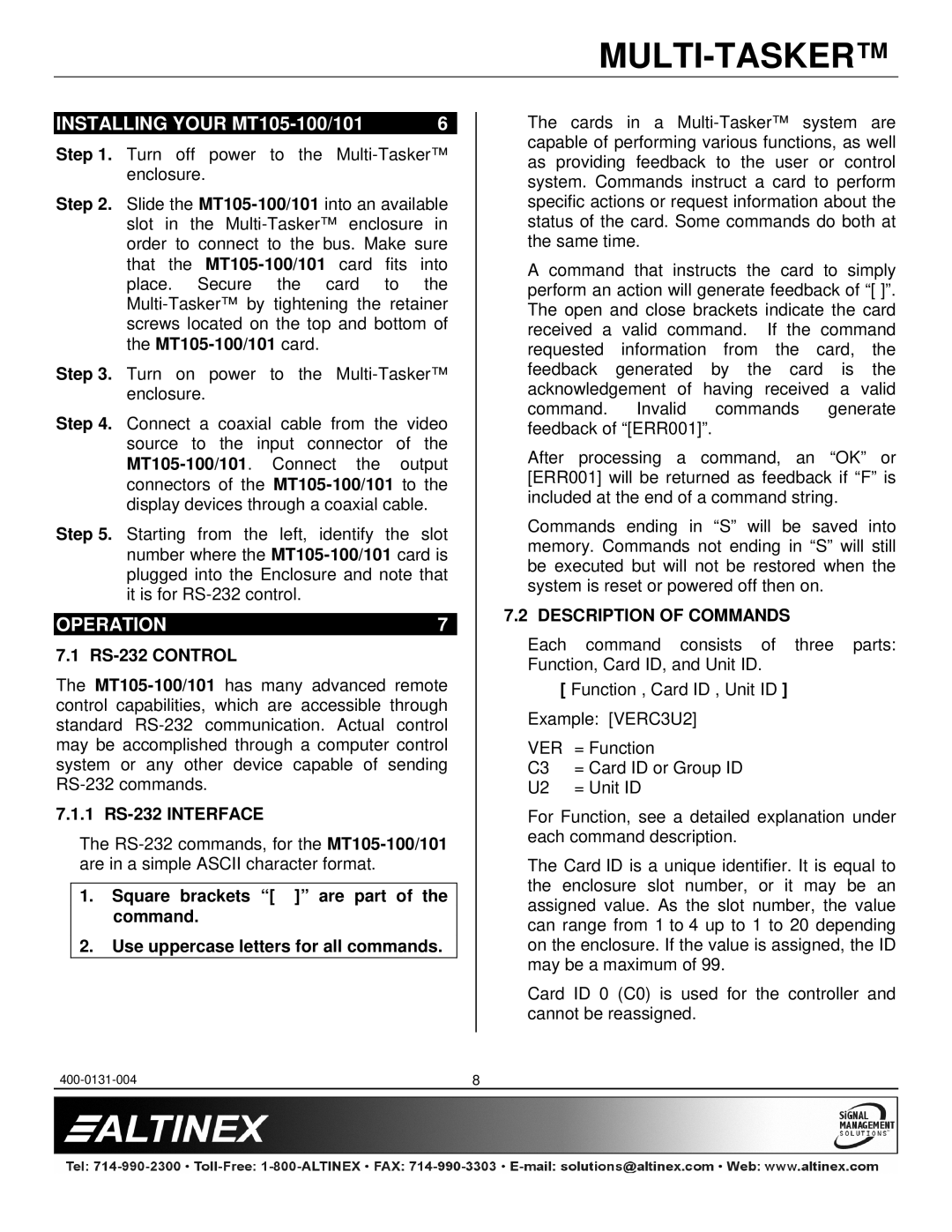
INSTALLING YOUR | 6 |
Step 1. Turn off power to the
Step 2. Slide the
Step 3. Turn on power to the
Step 4. Connect a coaxial cable from the video source to the input connector of the
Step 5. Starting from the left, identify the slot number where the
OPERATION | 7 |
7.1 RS-232 CONTROL
The
7.1.1 RS-232 INTERFACE
The
1.Square brackets “[ ]” are part of the command.
2.Use uppercase letters for all commands.
The cards in a
A command that instructs the card to simply perform an action will generate feedback of “[ ]”. The open and close brackets indicate the card received a valid command. If the command requested information from the card, the feedback generated by the card is the acknowledgement of having received a valid command. Invalid commands generate feedback of “[ERR001]”.
After processing a command, an “OK” or [ERR001] will be returned as feedback if “F” is included at the end of a command string.
Commands ending in “S” will be saved into memory. Commands not ending in “S” will still be executed but will not be restored when the system is reset or powered off then on.
7.2 DESCRIPTION OF COMMANDS
Each command consists of three parts: Function, Card ID, and Unit ID.
[ Function , Card ID , Unit ID ]
Example: [VERC3U2]
VER | = Function |
C3 | = Card ID or Group ID |
U2 | = Unit ID |
For Function, see a detailed explanation under each command description.
The Card ID is a unique identifier. It is equal to the enclosure slot number, or it may be an assigned value. As the slot number, the value can range from 1 to 4 up to 1 to 20 depending on the enclosure. If the value is assigned, the ID may be a maximum of 99.
Card ID 0 (C0) is used for the controller and cannot be reassigned.
8 |
8
